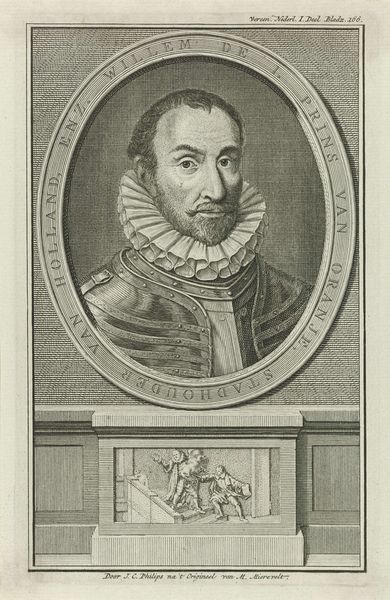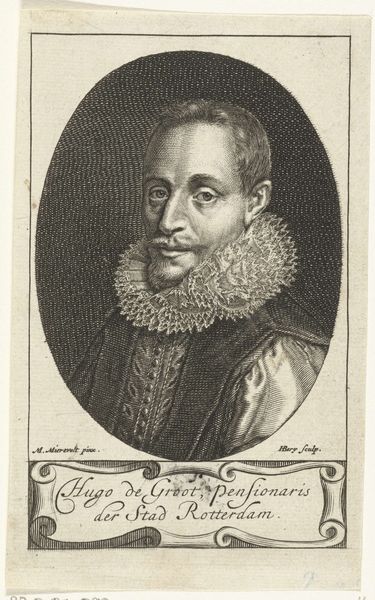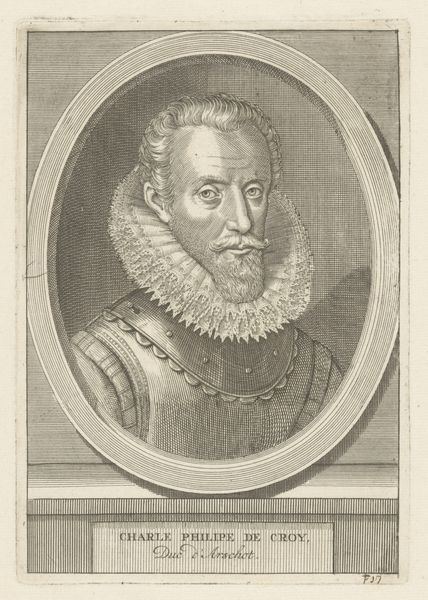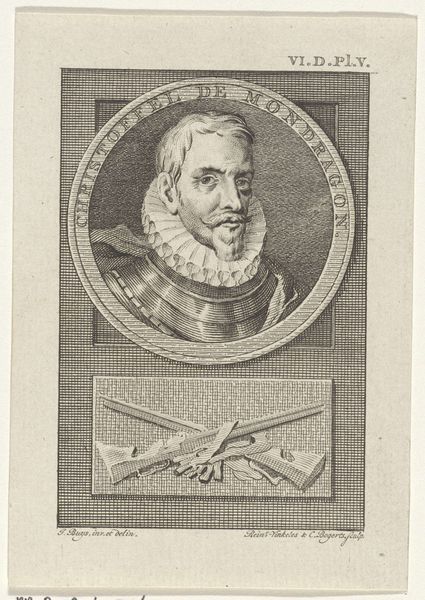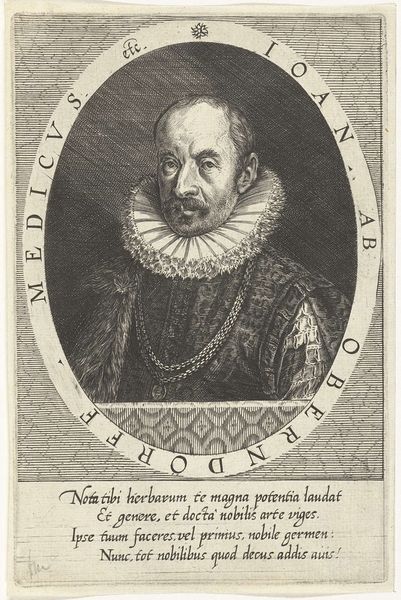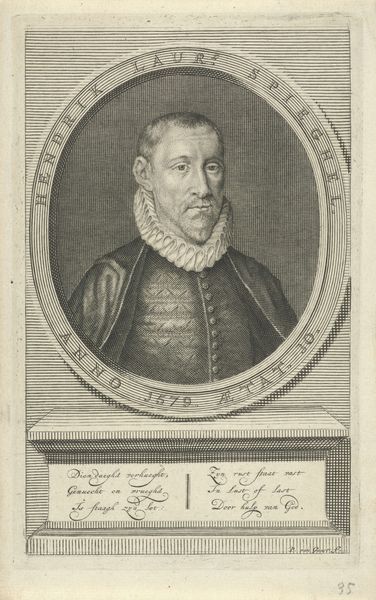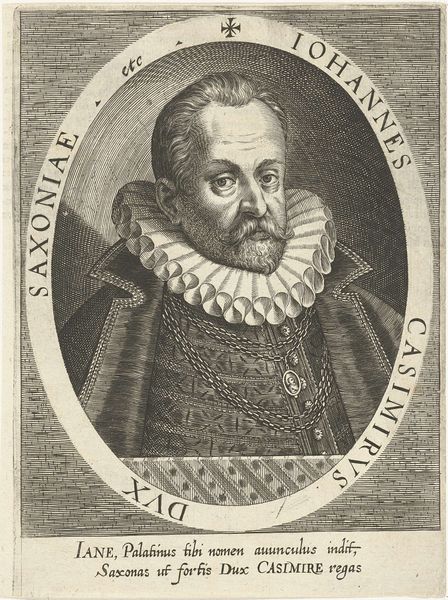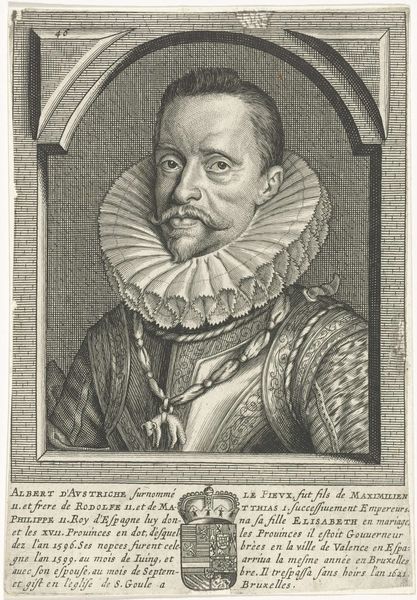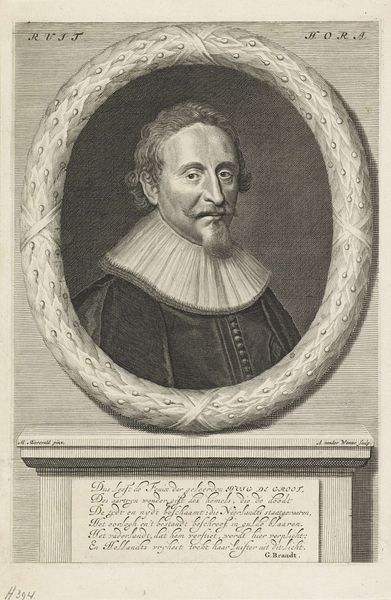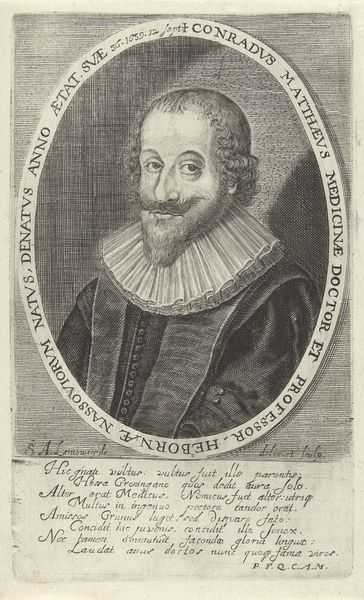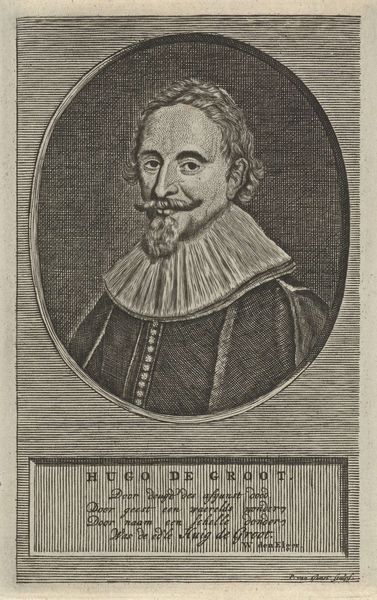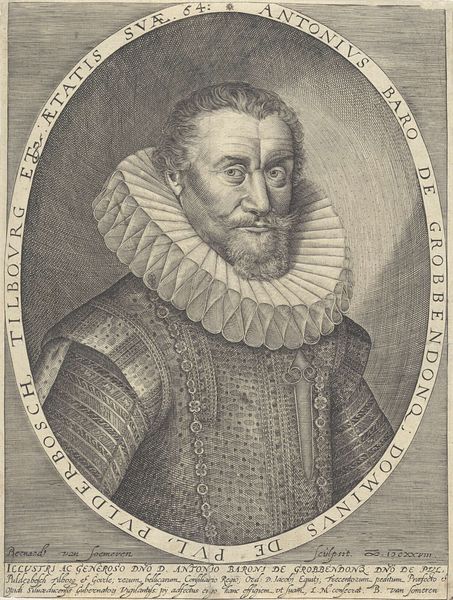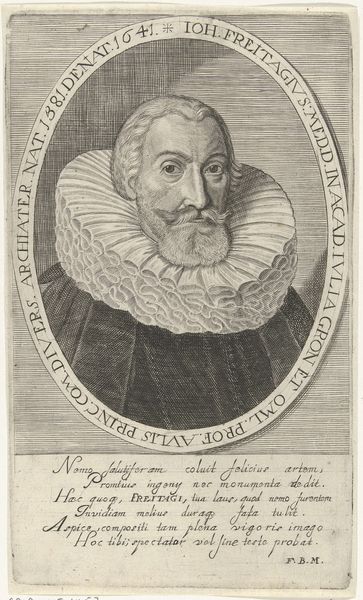
print, engraving
#
portrait
#
baroque
# print
#
old engraving style
#
engraving
Dimensions: height 187 mm, width 112 mm
Copyright: Rijks Museum: Open Domain
Curator: The somber expression strikes me first, an air of seriousness despite the elaborate attire. The use of fine lines and contrasting tones really bring him to life, don’t you think? Editor: We're looking at "Portret van Adolf van Nieuwenaar, graaf van Limburg en Meurs," a Baroque print crafted in 1752 by Jan Punt. Nieuwenaar held considerable political and military power during a tumultuous time. His position reflects the shifting alliances and conflicts during the Dutch Revolt. The print not only immortalizes his likeness but also speaks to the era’s preoccupation with lineage, status, and power. Curator: Precisely, note how the engraver rendered his lace collar. The artist meticulously captures light and shadow to add texture to the face and costume. Look at the details—the hair, the texture of the fabrics, even the subtle shadows. This suggests more than a physical likeness; it indicates the careful crafting of status through meticulous presentation, wouldn't you agree? Editor: I see that status reflected in his gaze, though I perceive something less about crafted status and more about a very material struggle for self-determination against Spanish rule and for the establishment of new societal norms within the Low Countries. Consider that collar, how such adornments become restricted depending on your gender or social standing. His adornments signal power—yet such things shift and are subject to so many interpretations. Curator: That's a thought-provoking view. But do you see the structural elements reinforcing its status, such as the use of geometric forms like the oval frame? Semiotically, that framing tells a very intentional narrative that separates and elevates the subject above other figures. Editor: The layering and density, so common in baroque aesthetics, communicate a complex relationship to this time and also the figure’s intersectional existence. Curator: I see your point, this artwork truly has more meaning as we start to analyze its components. Editor: Yes, I think analyzing historical and societal contexts are just as valid when it comes to interpreting artworks.
Comments
No comments
Be the first to comment and join the conversation on the ultimate creative platform.
